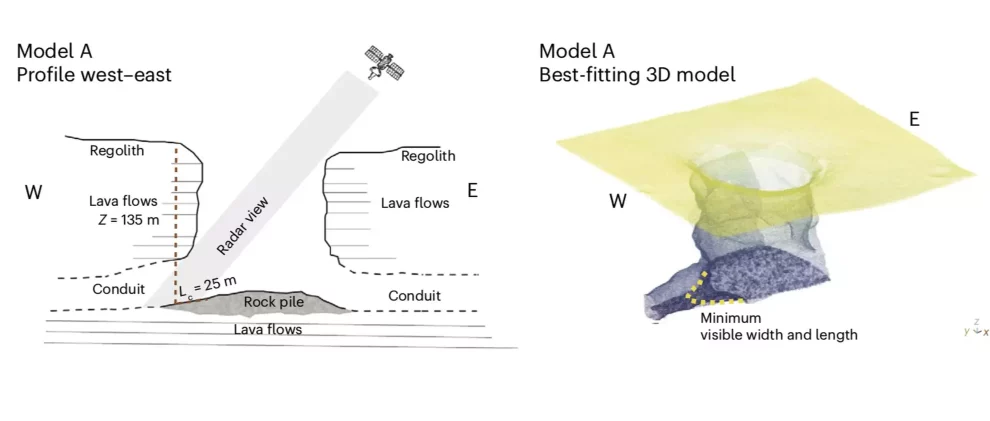The Moon has generated interest in recent years with promising projects such as a possible return of humans to the satellite or the construction of a railway network to transport goods. The discovery in 2009 of more than 200 wells on the lunar surface could be the key to future space missions.
Most of the holes have been photographed by probes orbiting the satellite. They originate from the collapse of lava that filled the holes leading to the surface, although little is known about their internal structure or whether there could be hidden underground caves beneath the surface.
The deepest chasm found so far is the Mare Tranquillitatis well, 100 meters deepA team of researchers from Italy has discovered that it has an underground conduit at its bottom that protects it from solar radiation, cosmic rays and micrometeorite impacts.
Tranquillitatis Sea It could be the perfect place to build a future space colony on the Moon. The study published in the journal Nature Astronomy points out that This well is accessible after analyzing the area with the LRO (Lunar Reconnaissance Orbiter) probe.
The cave located in this pit expands to the bottom, leaving smaller holes in its path. “More than 200 lunar pits have been observed, we present the first evidence that a lunar cave can be directly accessed from the bottom of one,” explained Leonardo Carrer, researcher who led the project, to elDiario.es.
The cave could house a lunar shelter
Nature Astronomy
Data from the LRO probe indicate that the well It could have a depth of 130 to 170 metersbetween 30 and 80 metres long at some points and about 45 metres wide. The cave has a relatively low inclination with a maximum of 45 degrees, so it would be habitable for future astronauts who set foot on the Moon.
The data had been available for 14 years, Carrer said. The fact that the study is new at this point is due to a reinterpretation of the data. The team of researchers has used current technology to create a 3D model.
Science aspires to reach the Moon, but it intends to stay when it does. This is not the first study to show possible candidates to host the future lunar colony. A 2022 investigation collected data using oblique images of six wells to explore their interior structure.
NASA joined the race to find a place to live on the Moon. That same year it claimed that The interior of these lunar pits has an average temperature of about 17 °Cso astronauts would not experience major changes compared to life on Earth.
The caves provide protection from outside temperatures and micrometeorites, but they could also be a source of materials and water. The pits are often close to sources of ice and other minerals that could facilitate life on the Moon.
Known how we work in ComputerHoy.
Tags: NASA studies, Moon




![[Img #73861]](https://thelatestnews.world/wp-content/uploads/2024/09/Dark-matter-near-Mars-150x150.jpg)







![[Img #73861]](https://thelatestnews.world/wp-content/uploads/2024/09/Dark-matter-near-Mars-300x200.jpg)

Add Comment